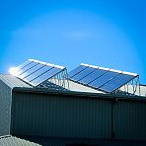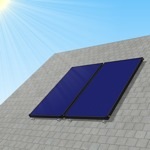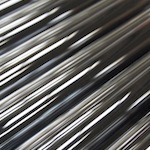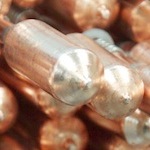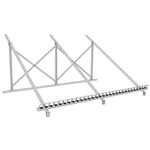Feb 19th, 2018
Nov 12th, 2015
Evacuated Tube Solar Collectors
Apricus ETC evacuated tube solar collectors convert energy from the sun into usable heat in a solar water heating system. This energy can be used for domestic and commercial hot water heating, pool heating, space heating or even air conditioning.
Product Overview
Apricus ETC evacuated tube solar collectors are available in 10, 20, 22 & 30 tube sizes (Some models may not be available in your local market).

Please download the ETC Overview document: International Version, North American Version
In North America the ETC-30C is available which meets the requirements for Buy American, government funded projects.
Construction
The ETC solar collector is comprised of four main parts:
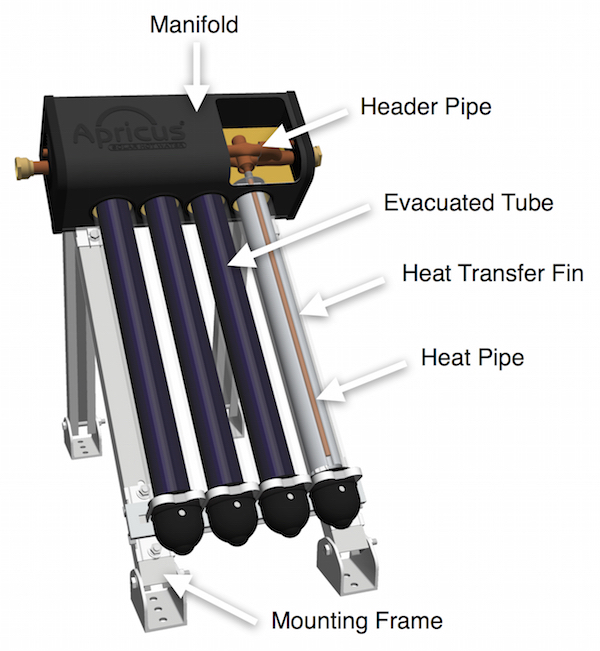
Evacuated Tube (ET)
Absorbs solar energy and converts it to usable heat. A vacuum between the two glass layers insulates against heat loss.
The Heat Transfer Fin helps to transfer heat to the Heat Pipe.
Heat Pipe (HP)
Copper vacuum pipe that transfers the heat from within the ET up to the manifold.
Manifold
Insulated box containing the copper header pipe. The header is a pair of contoured copper pipes with dry connect sockets that the heat pipes plug into.
Mounting Frame
Strong and easy to install with a range of attachment options.
Collector Operation
Step 1: The Apricus evacuated tube solar collector converts sunlight into heat. A circulation pump moves liquid through the collector, carrying heat back to the solar storage tank.
Step 2: Gradually throughout the day the water in the solar storage tank is heated up, either directly or via a heat exchanger (as shown).
Step 3: When hot water is used, solar pre-heated water is fed into a traditional water heater which boosts the temperature if not already hot enough.
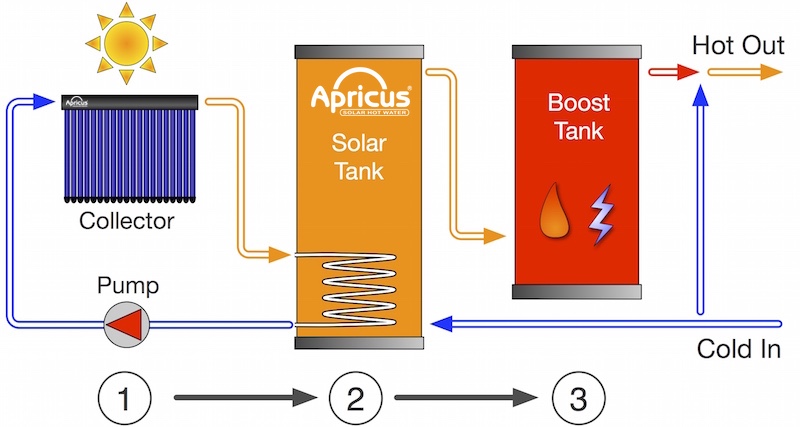
Following these links for more information about: Solar System Design, Evacuated Tubes, Heat Pipes.
Collector Mounting
Apricus ETC solar collectors can be mounted on a roof, wall, the ground or custom built structure like shown below on the roof of a restaruarnt in South Korea. For information on where the solar collector can be installed, click here. For examples of residential installation photos click here, commercial case studies photos click here.

Design Advantages
Evacuated Tube and Heat Pipe
The Apricus evacuated tube and heat pipe are assembled in a patented format that is different to any other product on the market. Rather than a centrally located heat pipe with heat transfer fins radiating out to the glass wall, the heat pipe is positioned directly against the glass wall, where the sun strikes. The aluminium heat transfer fin is tightly held against the top inner wall of the evacuated tube and heat pipe with a set of spring clips. This is an important design feature as over time, with exposure to high temperature, the Aluminium will soften. The spring clips gaurantee long term tight contact with the glass wall and heat pipe, which is essential for optimal performance.
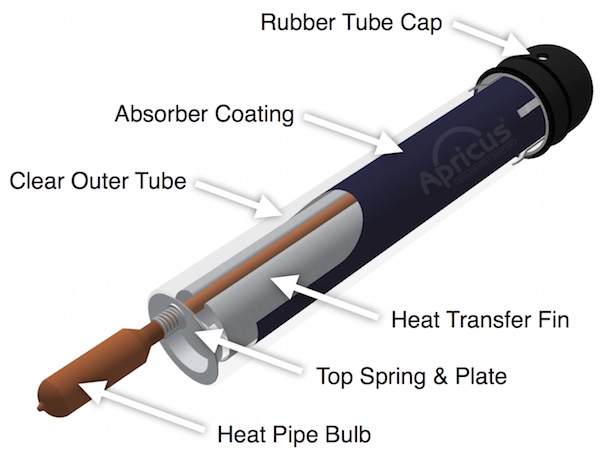
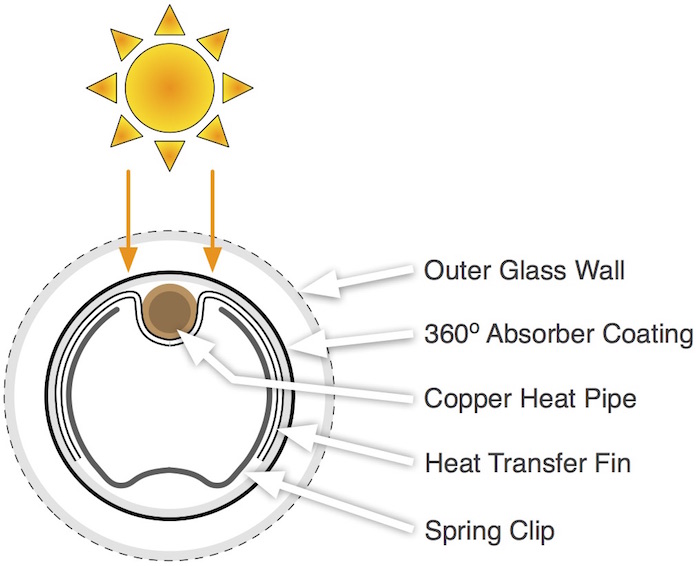
Passive Tracking
The round absorber surface of the evacuated tubes passively track the sun throughout the day, so no mechanical tracking device is required. This allows optimum surface area exposure from 7am to 5pm which covers the majority of the solar radiation each day. The Apricus evacuated tubes receive >20% more solar exposure compared to a flat absorber, allowing more solar energy conversion to heat each day.
![]()
The passive tracking feature also allows the collector to be installed at directions East or West of equator pointing (North or South) without too much reduction in output. A comparison completed for an Apricus ETC-30 system installed in Sydney, Australia showed an annual reduced output of only 5% for N-E or N-W, and 16% for E or W direction (% reduction may differ in other regions). This provides a great degree of flexibility when selecting a suitable location for the collector on a building.

For a more detailed explanation about passive tracking and incidence angle modifiers (IAM) click here.
Header Design
The header pipe in the AP series evacuated tube solar collectors is designed for reliability. Large fluctuations in operating temperatures from day to night cause thermal expansion and contraction of the metal, which, combined with high operating pressures, places a huge amount of stress on brazed connection points.
In contrast to most other header designs that have 2 brazing points per heat pipe (60 for 30 tube collector), the Apricus design uses a twin contoured header pipe design that allows "dry" connection ports that don't penetrate the header pipe. This means the header only has 4 brazing points in total. The result is an extremely reliable design that is able to withstand the rigors of daily thermal cycling.
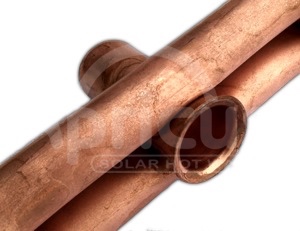
Manifold Casing
The manifold casing is made of a strong but lightweight aluminium alloy that is folded to form a strong protective enclosure. The casing is finished with matte black PVDF coating that is UV stabilised for long term colour fastness.
Glass wool insulation is "baked like a cake" to form a complete structural shell around the header pipe. This design minimises the amount of metal used in the casing, reducing embodied CO2, and making it very lightweight. The lightness of the manifold box is a feature that installers value when carrying onto the roof. The largest manifold size, the ETC-30, is 2196 mm / 86.45" long but only 9.2kg / 20.24 lbs.
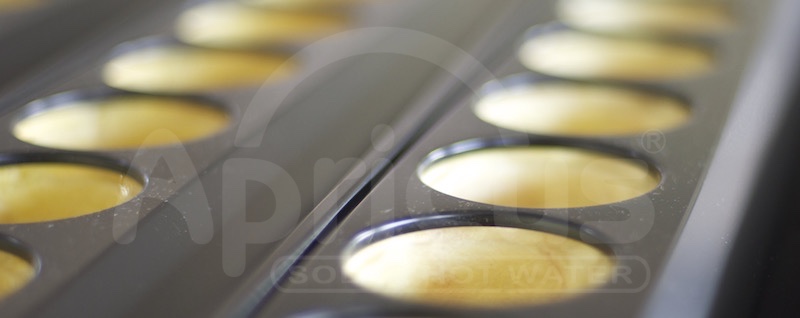
Weatherability
Operating outside means that all the components of the collector must be able to withstand all that Mother Nature delivers, from freezing conditions, to the extreme heat and UV radiation of desert locations.
Apricus collectors are design with this is mind. A good example is the use of silicone rubber instead of plastics for the tube caps, rubber header seals and manifold covers. Silicone rubber is extremely durable, staying flexible in a wide temperature range. It is able to withstand over 200oC / 392oF and is extremely resistance to damage from UV light.
.jpg)
Design Improvements
The ETC design includes a range of incremental improvements over the previous AP model. These changes are based on internal R&D and customer feedback.
Evacuated Tubes: Improved absorption efficiency, coating durabilty and colour consistency. Average yearly collector output increase of around 5%.
Manifold Casing: More modern, rounded casing design together with higher quality PVDF finish for superior corrosion resistance and colour fastness.
Mounting Frame: Signifcantly stronger, high tensile anodized alumimium mounting frame and 316 (marine grade) stainless steel fasteners and hardware. Only two of new front tracks are required even in high wind load regions as they are stronger than 5 of the previous stainless steel design.








